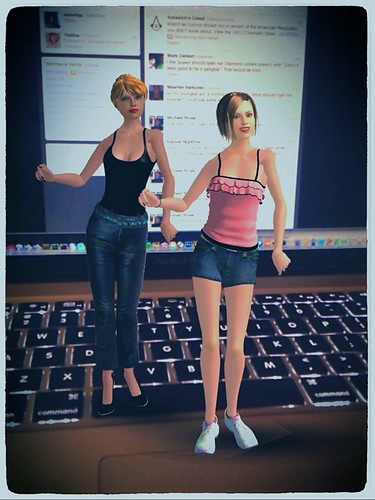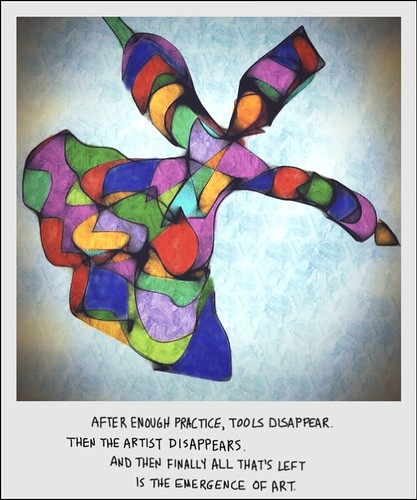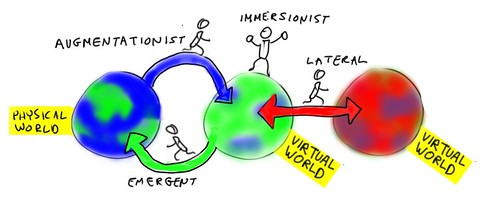Our identities are formed through a feedback loop between our visceral sense of self and the reflecting chamber of the external world. There is an ongoing interplay between our projection of self to others and the affirming or contradictory stories others project back at us us.
Over the course of life, the flexible and fluid emergence of our human potential becomes increasingly constrained by an accumulating legacy of personal history. Both our own sense of self and the way we are perceived by others become more fixed and less amenable to change. Although it is certainly possible to recreate oneself at any point in life, it is not simply a matter of acting to modify one's own behavior. It is very difficult to develop and maintain a "new you" when friends, family and colleagues continue to respond to the "old you" they are used to. This is why people who leave their hometown to forge new lives can quickly fall into old patterns when they come home for the holidays.
Pseudonymous identity lets us temporarily step out of the mutually reinforcing feedback loops outlined above and transcend some of the psychological, cultural and interpersonal constraints. We don’t merely leave our hometown behind, but also escape the socially defined feedback and presumptions associated with physical form, nationality, economic status, etc., including those we have internalized.
The power to escape the legacy of the past is even more pronounced in avatar-based pseudonymous identity that is grounded in active participation in virtual worlds. It not only allows us to redefine ourselves, but also to create new feedback loops with those we meet through the new identity. For instance, I suspect that many virtual world artists and designers who are perceived to be very creative individuals within Second Life, lead very different offline lives and are not viewed primarily as “creatives” within their physical world social circles.
Just dabbling In virtual worlds doesn’t actualize the transformative potential of avatar identity. The mind-altering power of virtual worlds is not realized until both the virtual environment and those we meet within it become as psychologically real as physical world experience. Then it's possible to begin expressing new dimensions of human potential through the avatar persona. To complete the circle, the new attributes developed within the virtual world can then be integrated into offline life.
Currently, the creation of a deeply realized virtual world identity can take a lot of time to achieve. Especially for one's first breakthrough immersion experience. And even after crossing that psychological line, the perceptual reality of the virtual sphere and one’s virtual identity will fade without consistent reinvigoration.That’s why a transition from screen-based to VR mediated virtual world experience should have a profound impact on pseudonymous virtual identity.
VR-based experience that provides instantaneous and more fully realized immersion is bound intensify the identity-shifting potential of pseudonymous virtual identity. If VR eventually becomes the new standard interface for virtual world experience, the identity-morphing potential of virtual worlds and avatar identity should become more pronounced and more widespread. (Assuming we’re not going end up exclusively using wallet name identities with avatars that mimic our physical world form.)
From the time an early human figured out she could use a stick to dig up insects to eat, people have been extending their biology through technology. From the phonetic alphabet to the digital computer, each new medium radically transformed human psychology and culture. As Marshall McLuhan wrote, "We shape our tools and afterwards our tools shape us.” If avatar embodiment in 3D virtual worlds eventually becomes as common and pervasive as today's use of cell phones and social networks, it will be fascinating to see how this bleeds over into wider culture.















